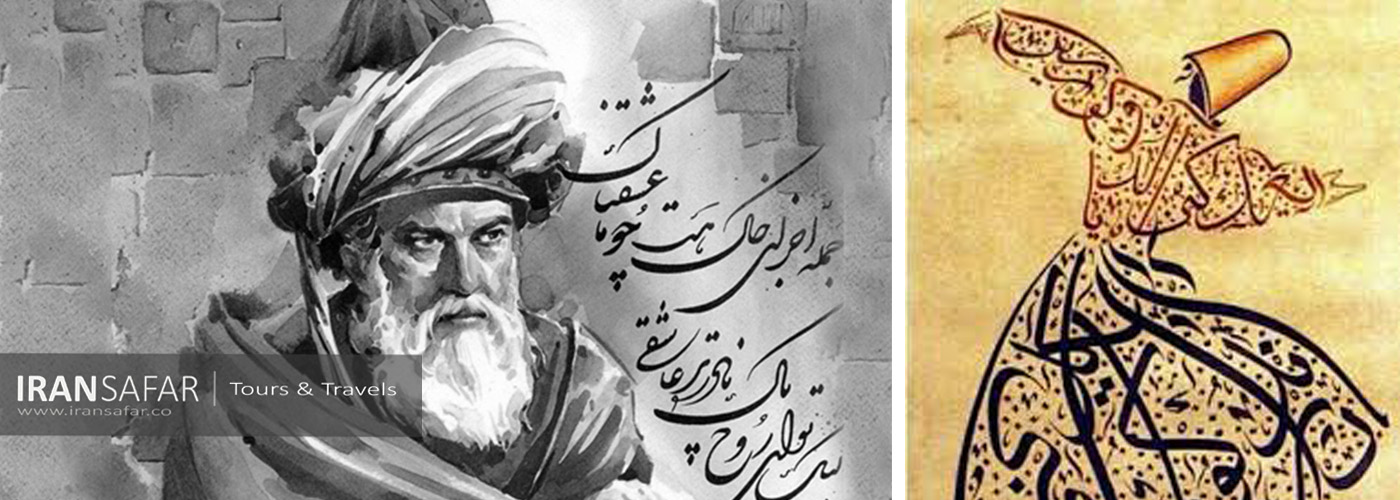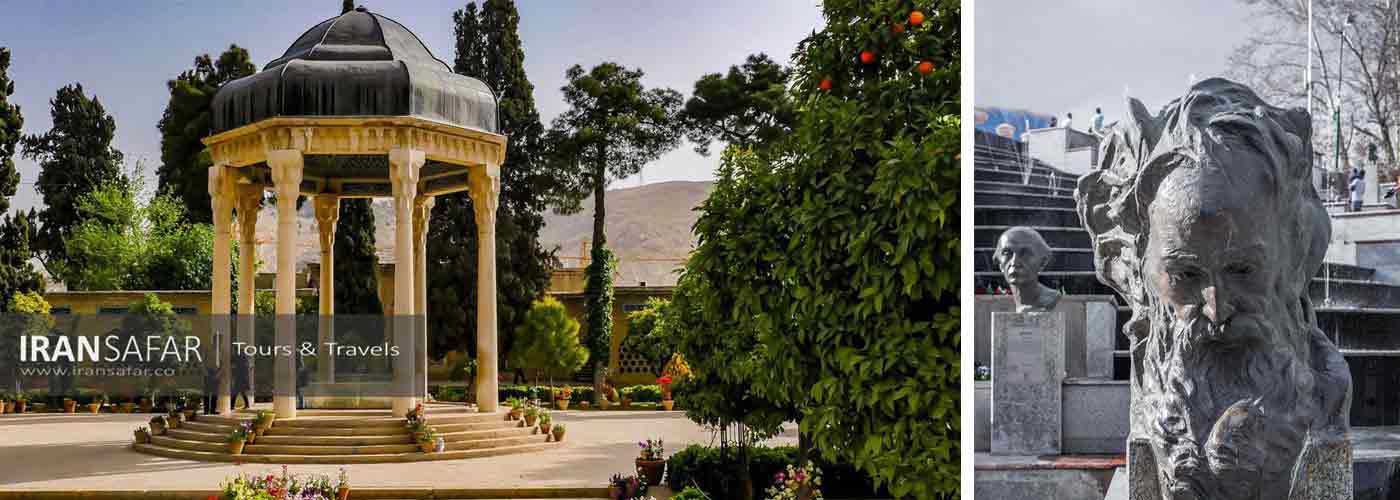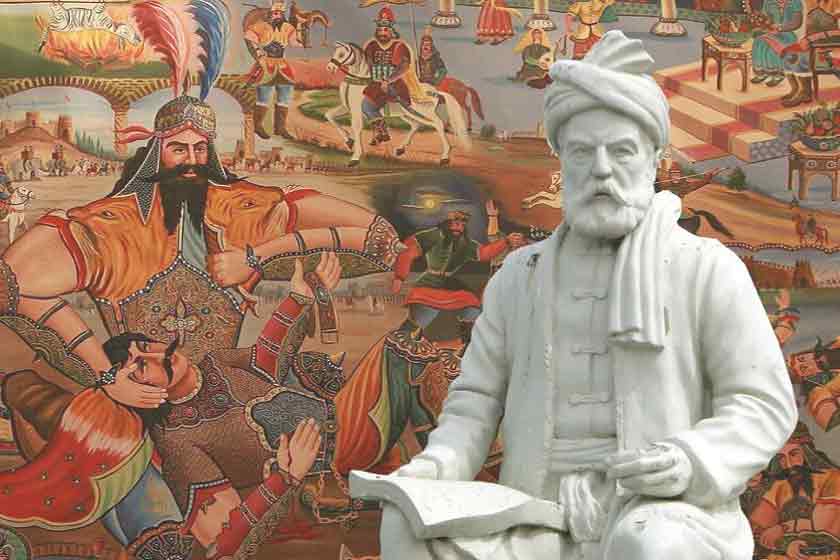Classical Persian poetry is always rhymed. The principal verse forms are the Qasideh, Masnavi, Qazal and Ruba’i. The Qasida or ode is a long poem in monorhyme, usually of a panegyric, didactic or religious nature; the masnavi, written in rhyming couplets, is employed for heroic, romantic, or narrative verse; the ghazal (ode or lyric) is a comparatively short poem, usually amorous or mystical and varying from four to sixteen couplets, all on one rhyme. A convention of the ghazal is the introduction, in the last couplet, of the poet’s pen name (takhallus). The ruba’i is a quatrain with a particular metre, and a collection of quatrains is called “Ruba’iyyat” (the plural of ruba’i). Finally, a collection of a poet’s ghazals and other verse, arranged alphabetically according to the rhymes, is known as a divan.
A word may not be out of place here on the peculiar difficulties of interpreting Persian poetry to the western reader. To the pitfalls common to all translations from verse must be added, in the case of Persian poetry, such special difficulties as the very free use of Sufi imagery, the frequent literary, Koranic and other references and allusions, and the general employment of motorhome, a form highly effective in Persian but unsuited to most other languages. But most important of all is the fact that the poetry of Persia depends to a greater degree than that of most other nations on beauty of language for its effects. This is why much of the great volume of “qasidas in praise of princes” can still be read with pleasure in the original, though It is largely unsuited to translation. In short, the greatest charm of Persian poetry lies, as Sir E. Denison Ross remarked, in its language and its music, and consequently the reader of a translation “has perforce to forego the essence of the matter”.
Omar Khayyam
Born in Nishabur in Khorasan. philosophy, jurisprudence, history, mathematics, medicine and astronomy were among the subjects mastered by him. Khayyam moved to Sanmargand, Esfahan and Merv in his life. this brilliant scientist is famous today not only for his scientific accomplishment but for his literary works. He is perhaps the best known Persian poet in the west by fitzgerald`s translation of his rubaiyat.
Khayyam died in 1123 in nishabur and his tomb is there.
Ferdowsi
Ferdowsi was born around 950 in a village in Khorasan. he is believed to have been a landowner, deriving a comfortable income from his estate. he received a fine education, concentrated on Persian literature and Iranian mythology.
Shahname (the book of kings),a poem of 60,000 couplets, occupied him for 35 years. he completed his great poem in 1010 and presented it to sultan Mahmoud, the Qaznavid king. Iranians regard the Shahname as their greatest epic poem which preserves for posterity their country s past in sonorous and majestic verse. the stories of the Shahname are inseparable from Iranian cultural life, and are constant source of inspiration for Iranian art.
Ferdowsi is buried in Toos, Khorasan of Iran.
Rumi
Jalal al-din Mohammad Rumi, also known as Molana or Mowlavi, is one of the greatest Persian poets and soufi mystics. he was born in 1207 in Balkh. when he was 12, his family, fleeing from Mongol invasion, moved to Konya in Anatolia. he got lots of spiritual education in Balkh, Aleppo and Damascus from some of the greatest religious minds of the time.
He has some great poem books which are known as divan-e shams-e tabrizi, masnavi-ye manavi(the spiritual couplets), Rubayat and…
Molavi died in Konya in 1273 and was buried beside his father in a splendid 13th century mausoleum. Rumi`s work is translated into many languages and is appearing is now one of the most widely-read poets in America. Read more about Rumi

Saadi
Saadi was born in Shiraz around 1200.he was sent to Baghdad in his childhood to study at the Nezamyie college. Saadi traveled through many countries ,He wondered around Anatolia, Syria, Egypt, Iraq, India and north Africa. he reappeared in Shiraz as an elderly man and spent rest of his life there, his best known works are Boustan (the orchard) and Golestan (rose garden) in both prose and verse. One of his most famous sayings has prompted comparisons with the 17th-century English poet, John Donne:
The sons of Adam are limbs of one another
Created of the same stuff and none other
One limb by turn of time and fate distressed,
The others feel its pain and cannot rest.
Who unperturbed another’s grief can scan
Is no more worthy of the name of man.
A version of this adorns the United Nations building in New York. Saadi’s golden maxims are highly valued by the Iranians, who consider them treasures of real wisdom.
Saadi died at in 1292 in his hermitage where his tomb now stands.

Hafez
Mohammad shams al-din Hafez (Hafiz) was born in 14th century. when he was still young he enjoyed a solid education in Persian literature, the sciences and Arabic. he was very well versed in Koranic sciences-hence his nom-de plume Hafez(one who has knows Koran by heart).
Hafez never left Shiraz, except for the trips he was forced to do. He was undoubtedly an eminent sufi, but he seems to rise above the narrow views of his coreligionists and to look upon the world from a wider point of view. His poetry is the embodiment of sensuality and free thinking on the one hand and of the highest mystical enthusiasm on the other.
Hafez is buried in Shiraz.



Comment (0)